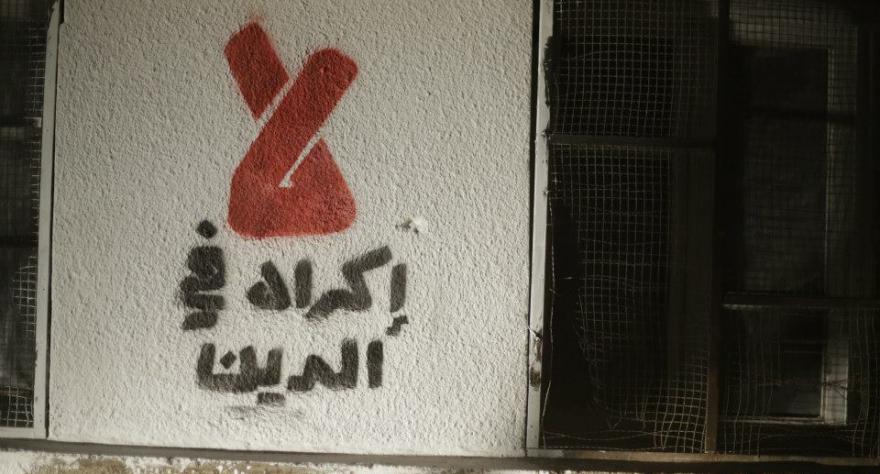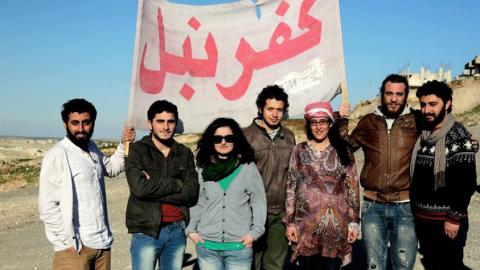“We find ourselves again under occupation, albeit this time by the Islamic State of Iraq and Syria (ISIS). After the greater part of northern Syria was liberated from regime forces we experienced great freedom in moving between the different villages and towns in that area. Today, we find our movement constrained again, and many of us even had to flee to Turkey or areas beyond ISIS’s reach.”
This is how journalist Amer Matar succinctly summarizes the situation in northern Syria. Matar, the director of the Street Organization of Media and Development, was instrumental in the commemoration campaigns organized by the Street (a word Syrians use for “public opinion”) to celebrate the revolution’s third anniversary. This commemoration, according to Matar, comes as a response to the many “disappointments felt by activists and people alike over the past year, culminating in a situation where we find ourselves fighting against two tyrants instead of one, ISIS and Assad.”
The Street has refused to surrender however, despite the bleak reality. This is partly born out of Matar’s belief that “freedom cannot be obtained without paying a hefty price, and it will be years before we can realize our dream of a just and free country.”

This year’s celebrations came in coordination with the Union of Revolutionary Bureaus, and the Kafranbel-based activist group, Live. The anniversary however, also comes with the absence of several of Matar’s friends and colleagues who were involved in last year’s events including his brother, Muhammad Nour Matar, who is being detained by ISIS.
The areas where the team has been able to organize events have shrunk considerably in comparison with the previous year. “Many of places where we organized events during last year’s commemorations are now under ISIS’s control including Manbij and al-Bab in Aleppo as well as Tell Abyad and Raqqah,” photographer, Abd Hakawati, recounts in an interview with SyriaUntold, “ISIS has event painted some of the colorful walls left from last year’s events in black, and turned one of the destroyed buildings which we had painted over into a garbage dump.”
This situation prompted the team to dedicate a major portion of their activities to events aiming at countering the hegemony of ISIS’s discourse. ISIS’s assault on the freedom of Syrian’s in the name of Islam and the Quran was countered by signs and banners quoting the Quran in defence of freedom including “There is no compulsion in religion” and “Then whosoever wills, let him believe, and whosoever wills, let him disbelieve”.

The organizers chose Kafranbel, which is free of both occupations, as their main venue for this year’s commemorations. In a clear message to both Assad and groups like ISIS, the organizers declared that “there is no outcome but freedom.”
The commemoration event also gave a tribute to art’s role in resistance through the many murals and graffiti paintings that covered the walls of Kafranbel and its surrounding countryside. As part of the event a mosaic exhibition was also organized by artist Maan Kleido displaying 20 works of art.
The event organizers also attempted to overcome the constraints of geography and security by launching a virtual festival for Mobile Films. The festival’s main aim is to “encourage the artistic talents which rely heavily on mobile phone cameras in documenting and filming, and which have flourished considerably with the Syrian revolution.”
The participating films will be shown across the liberated areas of northern Syria in open-air screenings in September of this year, as well as over the internet on the festival’s homepage.
The differences between last year’s festivity and this one are stark indeed. The tyrant has mutated into many, the margins for civil society have shrunk, and the broken walls of fear from Assad have found themselves reconstructed into fear of ISIS’s retribution. Despite this, Matar and his colleagues find in the “art always defeats oppression” mantra the power and belief to push forward with their battle against tyranny, all tyranny.



